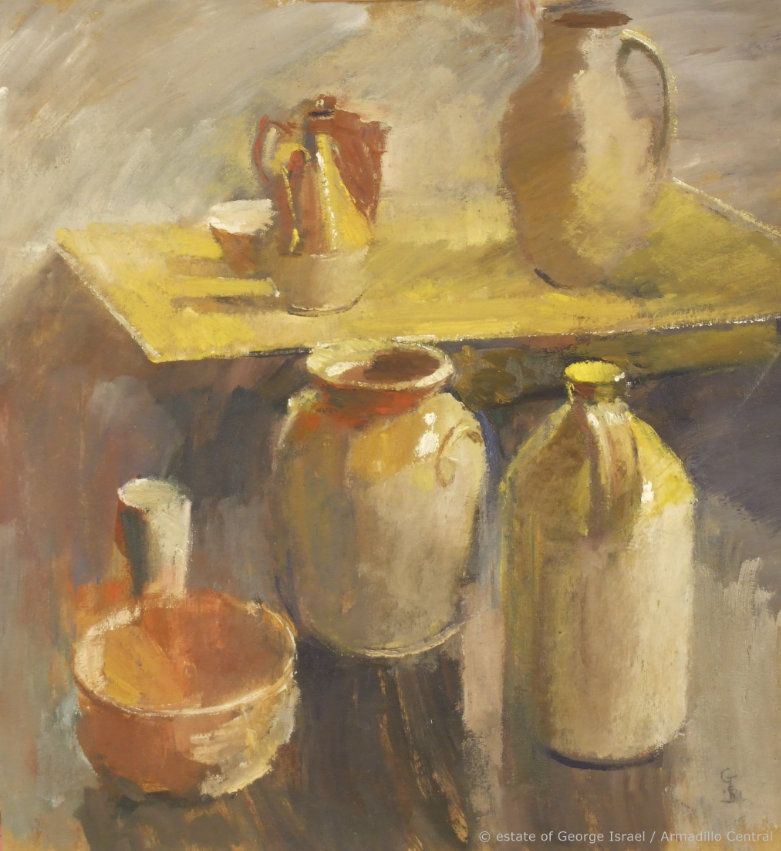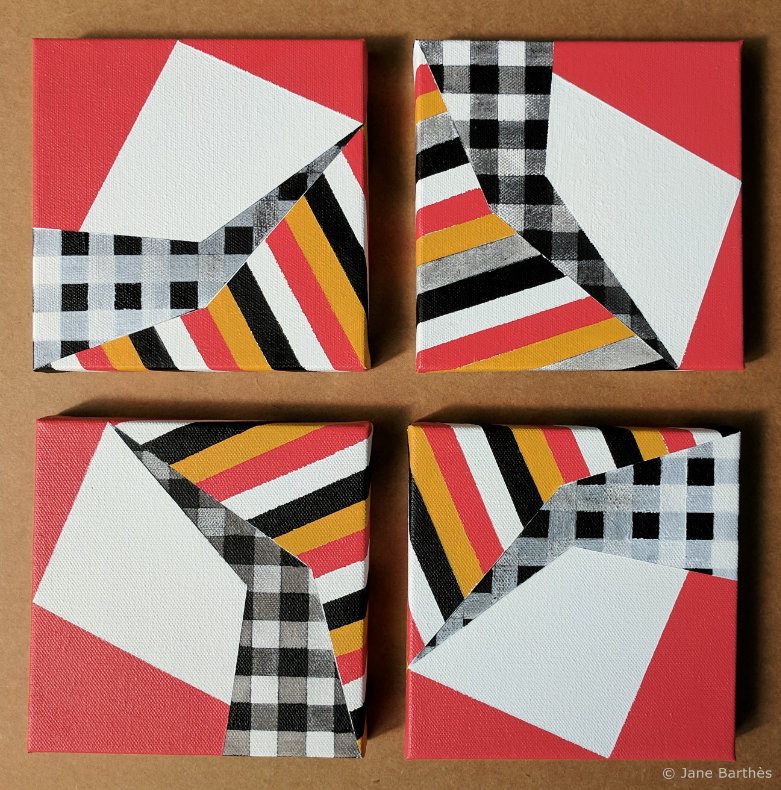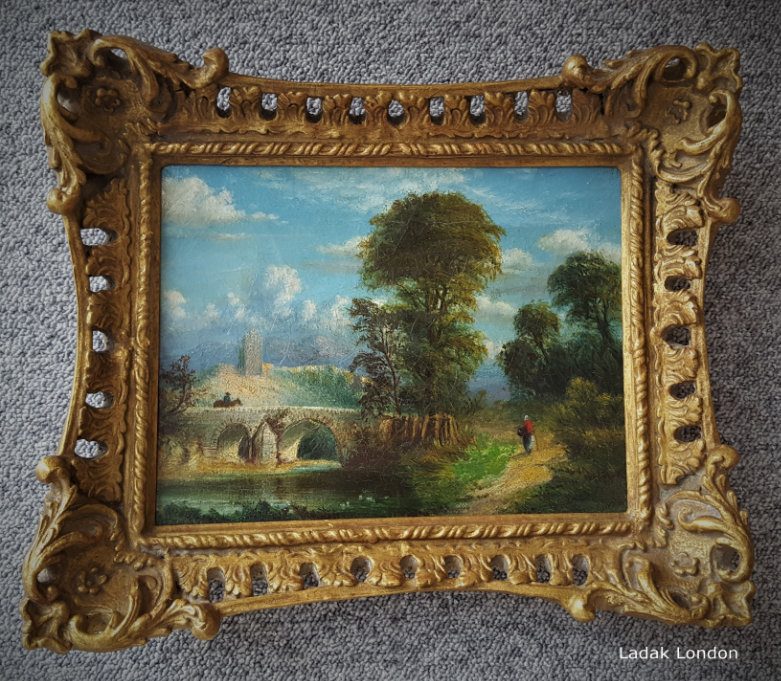We thought we’d share a few tips on framing oil and acrylic paintings, gleaned from our years of working with almost every kind of work from modern miniatures through to large scale vintage masterpieces.
Most oil and many acrylic paintings do not require glass since they are largely resilient to light and moisture. You should however consider the surface that they are painted on before making your final decision. Works on paper and card may be more vulnerable, to damp especially, than those which have been painted on canvas. We are currently working on this oil on board by the late artist George Israel. Check back later for our chosen methodology, which we have yet to discuss with our client.

Although some might argue that glass could trap any moisture in, if the work is essentially sound (oils can take decades to dry incidentally) prior to framing and then subsequently hung in the correct environment, a protective layer of glass might be a good idea in some instances. That said you should make sure that oils, where they are thick and particularly when they have a markedly 3D appearance, have sufficient room ‘breathe’ when placed under glass. We would always recommend using spacers to create an area which will protect a given artwork’s surface from the risk of damage.

There is no doubt that a frame will in most cases improve the look of an oil and also acrylic paintings, the exception being where the artist has painted the outside edges, creating an area which is integral to the artwork. See for instance this group of works by contemporary abstract artist Jane Barthès. Our single artwork image highlights the sides, a feature in this entire collection of Barthès’ paintings which clearly one would not want to obscure with a frame.

A simple ‘framing’ option which works well with many works, covering up any areas of a stretched canvas edge that have been marked in the painting process, or simply to create a neatly defined framework, is tape. Here we show 2 pieces by the same artist, Misha Shengelia (the subject of our very first exhibition) edged in black and then white.

 Other considerations when deciding on frames include visual cues – the work itself and also the setting in which the painting will be hung and its position in a given space. Will it for instance be centre stage, above a mantelpiece, central to a dining table or on a feature wall? Is your home modern, traditional, of a specific era or eclectically decorated? Do you like using strong colours, are you a maximalist or a monochrome minimalist perhaps?
Other considerations when deciding on frames include visual cues – the work itself and also the setting in which the painting will be hung and its position in a given space. Will it for instance be centre stage, above a mantelpiece, central to a dining table or on a feature wall? Is your home modern, traditional, of a specific era or eclectically decorated? Do you like using strong colours, are you a maximalist or a monochrome minimalist perhaps?
Many oils and sometimes acrylics are traditionally framed with a linen liner acting as a mount and visual break between the frame itself and the picture. The liner can vary in width and colour. The alternative is to frame right next to the picture as with the oil painting below. The choice is very much down to the painting and the frame and without doubt personal taste. If you’re finding it difficult to decide, the Ladak London team are here to help. Our choices will first and foremost be dictated by the artwork itself. We will of course also be considering the setting and most important of all, your preferences.
If you’re planning on having some works framed and would like to talk through the various choices, please call or email to make an appointment first so that we can be sure to give you our full attention.



